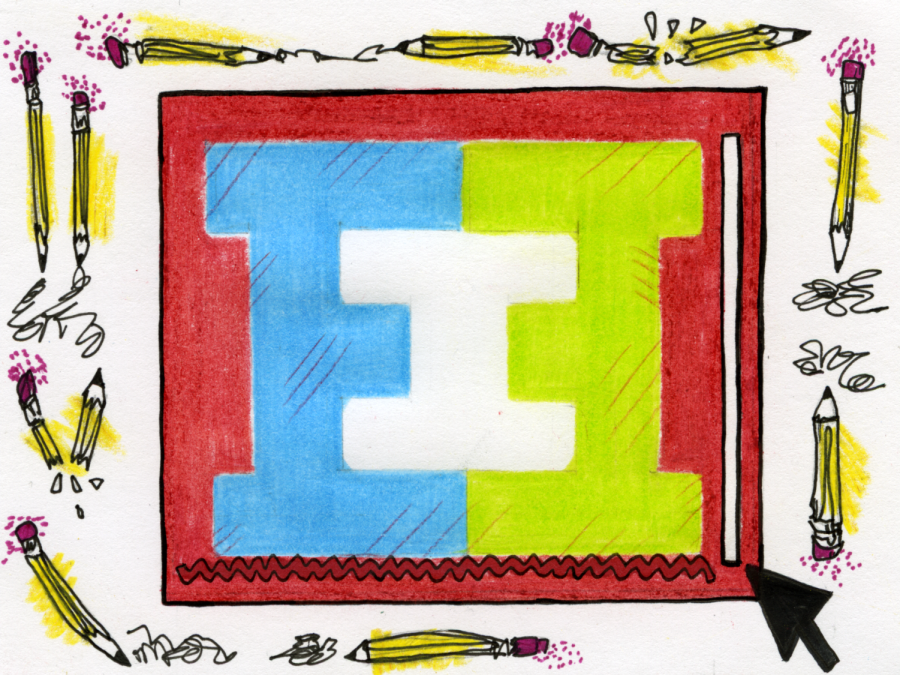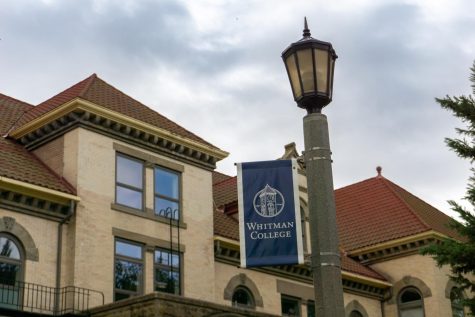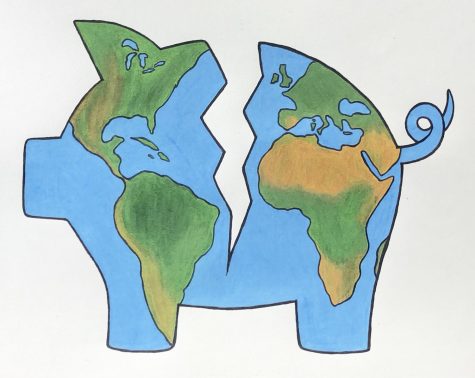Learning differently at Whitman
April 14, 2022
Never being able to sit still or stop talking are two of my most prominent personality traits. The question, “Did you take your meds today, Amelia?” was thrown around in my home and here at Whitman in my friend group, all the time in response to my hyper and sometimes very intense energy. My ADHD has always played a major role in my life, but I did not realize this until coming to Whitman. In high school, none of my friends had (diagnosed) ADHD, so I never related to peers, family members or anyone else around me on that aspect of my identity. In fact, I barely considered ADHD to be an aspect of my identity at all.
Sophomore Jake Van Tassel has felt the effects of the lack of understanding around learning disabilities, especially among older generations, which can be very isolating to those who learn differently.
“A lot of teachers were sort of annoyed about my disability rather than seeing it as something they could support me on or help me express,” Van Tassel said.
In high school, I overheard my pre-calc teacher complain to her colleague during the final minutes of my exam, “it’s just ridiculous to me that these kids get extra time when obviously everyone would do better with extra time on tests.” This comment demonstrated a severe lack of acknowledgement or understanding of learning disabilities, but I did not view it as such at the time because I myself did not understand learning disabilities.
Antonia Keithahn works in the Academic resource center to coordinate with and support students who receive accommodations for learning disabilities. She views reports like the one I described as teachable moments and uses equity-based language when educating others on these matters.
“Accommodations are not a bonus or some magical gift given to certain students, it’s how we restore equity to a non-equitable situation,” said Keithahn. “If you don’t know why you’re getting accommodations, maybe you wouldn’t necessarily understand that equity imbalance that’s getting restored. We need to have more conversations and more openness to help both individuals and institutions and society overall.”
Keithahn described my experience perfectly. I knew that I had ADHD, but since I had not bothered to learn anything about my disability, I was highly susceptible to invalidation from others. Despite being aware of my diagnosis, I had no conception of the many ways in which having ADHD makes everything in school harder. I chalked up my difficulty focusing in class to laziness or inability to understand the material. I remember telling my mom junior year, while trying to make sense of why I felt I was not getting anything out of school, that I had no academic interests and was simply not intellectually curious. I was willing to blame my struggles on everything but my learning disability.
Coming to college helped me discover that I was wrong and do in fact enjoy learning. A few experiences that led me to this discovery were smaller class sizes, engaged and understanding professors, resources like the ARC and, most importantly, a community rich in neurodivergent people.
“Being able to see how many people also struggle with ADHD has helped me become more comfortable with it. In elementary school I had a different outlook on it because it wasn’t as visible, but here it’s a much more commonplace,” said Van Tassel. “I surround myself with people who also have ADHD. It’s kind of difficult for me to feel comfortable around people who don’t necessarily deal with similar issues.”
Whitman’s student-to-faculty ratio and wealth of resources attract a student population diverse in learning styles. Another reason Whitman may be slightly overrepresented in terms of ADHD is the racial and ethnic disparities in its diagnosis and treatment. Studies have shown that people of color were significantly less likely to be diagnosed with ADHD compared to white peers. White people are also more likely to receive treatment for ADHD. People of color and non-male-identifying people have historically been left out due to overly specific diagnostic processes. While the diagnosis and treatment models are beginning to expand to account for diverse experiences, an enormous imbalance remains.
The past couple of years has produced a seemingly sudden increase in people receiving ADHD diagnoses. One reason is expansion of diagnostic profiling, which is becoming increasingly inclusive of girls and women and their unique symptoms. Girls with ADHD typically display fewer notable behavioral problems than their male peers, so their challenges, such as difficulty concentrating, are often overlooked. We tend to view ADHD in a narrow way: hyper, loud and disruptive. While this is the way that some express ADHD, it manifests differently in everyone. New understandings of ADHD are beginning to account for this.
On the flip side, the increase we have seen in learning disabilities is also the result of an extremely high-achieving cultural mindset. When academic success is seen as both imperative and rigidly defined, people with learning disabilities are likely to fall behind. This cultural mindset is ever-prevalent at Whitman, and in turn, learning disabilities are as well.
“I would love to see us move past getting so stuck on diagnosis and move toward universal design in curriculum creation where all learners can be centered in the education process,” said Keithahn.
Unfortunately, we remain a long way from education reform that centers all learners. In the meantime, destigmatizing and increasing general understanding of ADHD, along with other learning disabilities, is possible through the creation of spaces like Eye to Eye.
Eye to Eye is a non-profit mentoring program created by and for people with learning disabilities, pairing college and high school students up with middle school students. These partnerships create an environment that promotes metacognition, self-advocating and other social-emotional learning skills.
Every Tuesday evening, I go to Garrison Elementary School along with Whitman’s chapter of Eye to Eye. It’s always a delightful motivational boost, and the work is rewarding: conversations about learning disabilities can make a huge difference in formative years.
“I think if I had someone to look up to in middle school to discuss my ADHD with I would’ve been a lot more comfortable with myself,” said Van Tassel.
This sentiment rings true for me as well, which is why we must encourage kids to learn about their disabilities. It’s amazing to see the kids express these aspects of their identities and to hear my own peers share the positive things they have to say about their learning disabilities.
“I think it’s fun having ADHD,” said first-year student Naomi Presken. “I think I’m very observant and hyper aware of many unique things.”
“I think having ADHD makes me more creative and allows me to connect with people who I maybe wouldn’t have connected with sans my disability,” said Van Tassel.
Similarly, I would not have had the opportunity to connect with the people in Eye to Eye without my learning disability. One of these people is junior Camilla Tarpey-Schwed, one of the club leaders.
“My favorite thing about mentoring is providing a space for our mentees to discover and learn their learning differences and helping them build their self understanding is so rewarding,” said Tarpey-Schwed. “I’m just so happy our mentees have that space and community.”
Every school should have spaces like Eye to Eye and be aware of the intersection between ADHD and other aspects of people’s identities when thinking about equity issues in schools.







